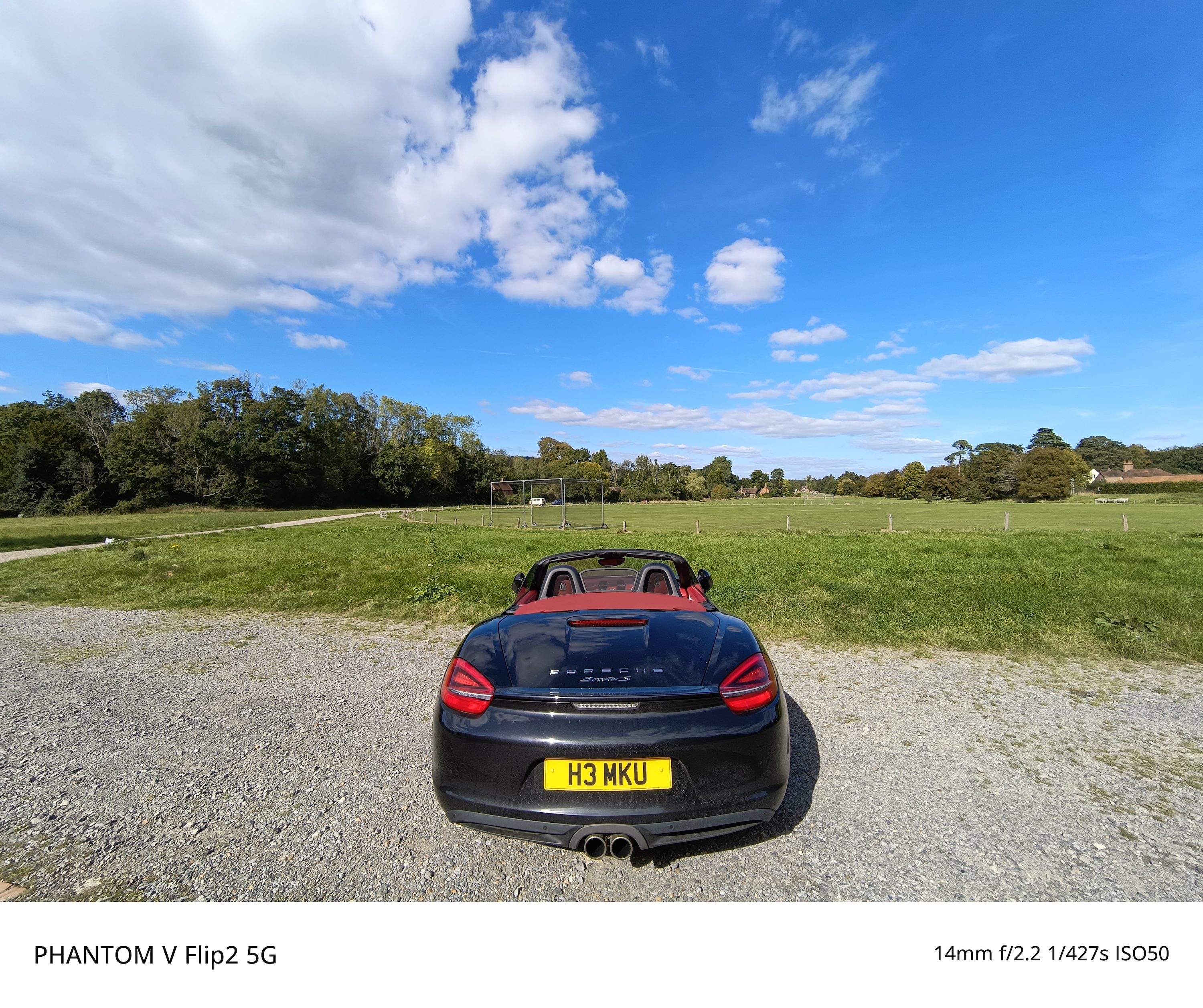There’s something very satisfying about using a pair of folding phones where I don’t have to first consider the cost before talking about anything else. Tecno’s Phantom V Fold 2 and Phantom V Flip 2 aren’t cheap, but they can be considered affordable in today’s high-priced smartphone world.
Despite that, neither is horribly compromised or obviously built on a strict budget. There’s a lot to like — and also a lot that other brands can learn from these two fun foldables.
Truly affordable foldables

Tecno doesn’t sell its smartphones in the U.S. or the U.K. and instead focuses on other regions around the world where affordable phones are big business. I love that Tecno has opted to make desirable foldable devices when it could just stick to sensible mid-level non-folding phones to catch sales. We know the company isn’t afraid of pushing the envelope when it comes to new tech, as demonstrated by its tri-fold Phantom Ultimate 2 phone revealed recently.
If you want to buy the big-screen Tecno Phantom V Fold 2, it’ll cost you about $1,100, which is at least $500 less than the majority of the competition.
For this, you get a 6.42-inch 120Hz cover screen, a 7.85-inch 120Hz unfolded screen, a MediaTek Dimensity 9000+ processor with 12GB of RAM, a triple camera consisting of a 50-megapixel main camera with 2x optical zoom, a 50MP portrait, and a 50MP wide-angle camera, plus there are two 32MP selfie cameras — one for each screen. Inside is a 5,750mAh battery with wired and wireless charging, and at just under 12mm thick when folded, it’s reasonably slim for a big folding phone but still heavy at 249 grams.

The Tecno Phantom V Flip 2 is cheaper at around $700. It’s 196 grams and 16mm thick when folded up, with a simple 3.64-inch cover screen and a 6.9-inch main screen when flipped open. A MediaTek Dimensity 8020 processor with 8GB of RAM is used to power the phone, along with a 4720mAh battery with 70W wired charging.
The camera module has a pair of 50MP cameras, one for wide-angle duties, plus a 32MP camera at the top of the open screen. The Phantom V Flip 2 isn’t as good value as the V Fold 2, but it is still less than you’d pay for a Samsung Galaxy Z Flip 6.
It all hinges on this

The specifications of each phone are perfectly acceptable for the price, but folding phones have one hardware component that sets them apart from others: the hinge. We usually expect to find compromises in the hinge, as less-refined hinges can have an unsatisfying motion, unpleasant sounds or sensations, and a general feeling that they won’t withstand any harsh treatment.
Neither the Phantom V Fold 2 or Phantom V Flip 2 have hinges that rival the Google Pixel 9 Pro Fold or the Samsung Galaxy Z Flip 6, but they do hold their own against devices like the Motorola Razr 2024 and the Vivo X Fold 3 Pro. For example, the Phantom V Fold 2’s hinge has varying levels of resistance and a noticeable sound when you fold and unfold it, but I do like the dampened snap when it fully closes. Sadly, it doesn’t unfold completely flat either, which does diminish the otherwise high-quality feel.

The Phantom V Flip 2 has a significantly more linear level of resistance and is actually rather loose for my liking, even out of the box, while the final closing snap is quite harsh. Neither hinge feels like it’s going to break, though, and Tecno has tested both phones’ hinges to an impressive 400,000 folds. Plus, the Phantom V Fold 2 has an IP54 dust and water resistance rating. The design means both phones are easy to open, which sounds like it should be a given, but Samsung and Google’s current preference for flat sides means it’s not.
What about the rest of the hardware?
Considering the price, the hinges feel fine, and I particularly like the V Flip 2’s cover screen, which takes up the majority of the front panel and even extends around the camera modules when used as a viewfinder. It runs apps without any need to set it up, and even apps like YouTube, which aren’t formatted for the screen, seem to run without a problem. It’s not a high-resolution screen, but the size prevents you from doing anything very intensive on it anyway, so it doesn’t really matter.
Tecno’s design for the Phantom V Fold 2 is less successful, mostly due to the 249-gram weight, which is a lot compared to the Galaxy Z Fold 6 and Vivo X Fold 3 Pro — I really notice it. It’s less well-balanced than the even heavier Pixel 9 Pro Fold, and I found it less comfortable to use for extended periods because of it. I also don’t like the boxy camera module, which ruins the otherwise sleek body and contributes to the top-heavy nature of the device.
However, the Phantom V Fold 2’s curved sides make it easy and natural to open the phone quickly, and I’ve had no problem with the side-mounted fingerprint sensor despite it being set flush with the case. Face unlock on both phones is even faster than the fingerprint sensor and worth activating during the set-up process. Money has been saved by using older versions of Gorilla Glass Victus and fiberglass for the rear panel, but few will really care, and even fewer will actually notice.
What about the cameras? The camera app is not the quickest I’ve used when switching between lenses, but the handful of sample photos I took turned out well. The V Fold 2 has better color balance and dynamic range, while the V Flip 2 amps the saturation for punchier photos you’ll want to share.
The 2x optical zoom on the V Fold 2 is significantly better than the V Flip 2’s 2x mode, which can struggle with exposure. I can’t give a complete verdict after so few photos, but nothing spells complete disaster for either camera at this stage. Neither Phantom model feels significantly “cheaper” than more expensive rival phones, and the differences are only really exposed after comparing them directly or by going spec-by-spec on paper. Don’t bother doing it, and instead, just be impressed with what you do get for the money.
Is the software the downside?

Both Phantom foldables have Android 14 and Tecno’s own HiOS interface, and it does take some getting used to, visually, compared to the more familiar realm of Android on a Samsung or Google phone. Spend some time customizing the home screen, and it can soon look much more familiar. On the V Fold 2, the MediaTek chip has the power to ensure the software is smooth and responsive. Unfortunately, the Phantom V Flip 2’s performance is noticeably less snappy than the V Fold 2’s.
Both phones have comprehensive, easy-to-activate split-screen and multitasking app features, including when viewing YouTube. Watch a video, and the controls automatically appear on the lower section of the screen, and running another app alongside a video on the Phantom V Fold 2 doesn’t slow the software down. Launching a third floating app on the V Fold 2 is a bit convoluted, though. However, it’s otherwise an easy multitasking system to learn and use.

HiOS includes some AI features including the usual summarization, translation, and assistant duties, along with some AI art and photo editing tools. The Phantom V Fold 2 also supports Tecno’s V Pen stylus, which gives direct access to the phone’s AI features, but there’s nowhere to store the stylus when it’s not in use unless you use the weird stick-on pouch that comes with it.
What other companies can learn from Tecno

Both the Tecno folding phones cost less than the flagship foldables from Google, Samsung, Motorola, and most others. While it’s possible to find where corners have been cut to get the price down, none of them will affect you daily, provided your expectations align with the phone’s performance and ability.
We’re used to folding phones, particularly big screen models like the Phantom V Fold 2, sitting close to the top of smartphone ranges, but Tecno proves these cool two-in-one devices can come down a step and still be desirable and capable. The Phantom Z Flip 2 is slightly less impressive, and I’d struggle to recommend it over the Razr 2024 or even an older Galaxy Z Flip 5 if you find one at a discount, just because the processor and RAM fail to give the software the zip it needs to be a comfortable phone to use every day.

What Tecno’s new Phantom phones do best is remind me that we don’t always need to spend thousands to enjoy the latest and most exciting mobile trends, and other brands would do well to introduce their own cut-price models for more of us to enjoy.
















